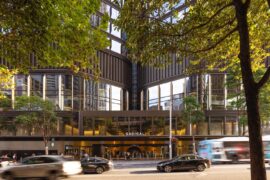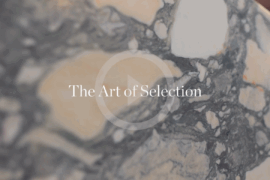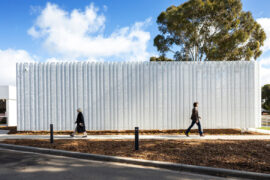How significant can the ripple effect be when city infrastructure is reconsidered with networked thinking? In Cubes 88, MVRDV and Ben Kuipers demonstrate with Seoullo 7017 Skygarden.

November 7th, 2017
Seoul has a history of breathing new life into abandoned sites in the city, marked famously by the successful restoration of Cheonggyecheon into an urban park in 2005. Hence, when the Seoul Station overpass was slated for demolition in 2006, it seemed only natural that the city and its people would decide to regenerate the abandoned infrastructure by transforming it into a pedestrianised urban connector and public space.
An international design competition was subsequently held in 2015, and the winning proposal came from Dutch architects MVRDV in collaboration with Dutch landscape architect Ben Kuipers. They worked with Korean firms DMP (architecture) and KECC (landscape).
There are several key agendas at the heart of the design intervention, namely green, urban and social considerations. For example, the intent is that the Skygarden will serve as a catalyst for the reintroduction of nature back into the urban centre.
Kuipers points out that one of the ideas at the heart of the project was to offer a new perspective on plants in an urban context. “Instead of using plants and trees only as decoration… each species is exhibited like a piece of art. This fosters awareness of the beauty of different plants that can grow here, while also increasing biodiversity in the city.”
The scheme also facilitates opportunities for social interactions in an otherwise mono-programmatic urban setting. As MVRDV describes, “There are 16 small pavilions accommodating programmes such as cafes, shops, exhibition spaces, a children’s theatre, et cetera. These features create ideal conditions for the Skygarden to provide an active, vibrant public space 24 hours a day, all year long.”
Vitally, there is an organic element in the Skygarden’s design that differentiates it from typical pedestrian bridges. Over time, the bridge will extend its ‘roots’ with additional links between the Skygarden and its neighbours. Besides increasing the number of pedestrian-friendly connections, this will activate green and public spaces further afield.
MVRDV explains: “The green strategy includes increasing the number of pedestrian streets and green squares, giving more space for pocket gardens, green alleys, roofs, parking and terrace projects to grow and expand, as part of this satellite expansion around the bridge.”
Read the complete story in Cubes 88, on shelves now! Or get the digital version via Pixelmags in App store!
INDESIGN is on instagram
Follow @indesignlive
A searchable and comprehensive guide for specifying leading products and their suppliers
Keep up to date with the latest and greatest from our industry BFF's!

Rising above the new Sydney Metro Gadigal Station on Pitt Street, Investa’s Parkline Place is redefining the office property aesthetic.

Merging two hotel identities in one landmark development, Hotel Indigo and Holiday Inn Little Collins capture the spirit of Melbourne through Buchan’s narrative-driven design – elevated by GROHE’s signature craftsmanship.

London-based design duo Raw Edges have joined forces with Established & Sons and Tongue & Groove to introduce Wall to Wall – a hand-stained, “living collection” that transforms parquet flooring into a canvas of colour, pattern, and possibility.

We caught up with Kabage Karanja, co-founder and co-director of Cave_bureau, ahead of the Living Cities Forum in Sydney and Melbourne.

The 2024 Living Cities Forum hits Australia in September, with a range of international speakers standing out amidst an expanded program.
The internet never sleeps! Here's the stuff you might have missed

CDK Stone’s Natasha Stengos takes us through its Alexandria Selection Centre, where stone choice becomes a sensory experience – from curated spaces, crafted details and a colour-organised selection floor.

Through expert architecture, EBD Architects has provided a human face to great design and created a project that enhances the lives of people and community.